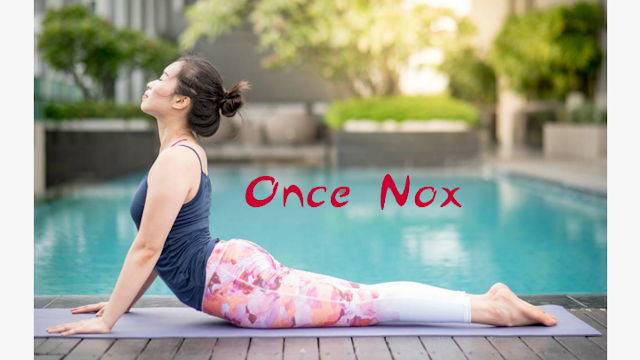What Is Yoga? How Is It Done?
What Is Yoga? How Is It Done? What Are The Benefits?
 |
| What Is Yoga? How Is It Done? |
The foundation of yoga, which has a history of about 5000 years, is the oldest teaching of India, the Vedanta philosophy. Later, this philosophy continued to evolve and change, opening to the Western world in the 1950s. The word meaning of yoga is known as "union, integration". In other words, it expresses the physical, spiritual and mental integrity of the person. Thanks to yoga postures and breathing exercises, the person relaxes his mind and body while discovering his soul again. Yoga can also be called the state of being balanced.
What Are the Benefits of Yoga?
?? The most important benefit of yoga is that it relaxes the mind.
?? Yoga renews the body and removes the mind from the negative thoughts brought about by modern life.
?? Stress and emotional concerns physically affect our body and accelerate aging. It is possible to open these stuck areas, to relax and most importantly to allow oxygen to enter the closed areas with yoga.
?? Yoga improves your posture by strengthening the back and abdomen, legs and arms, and helps to eliminate your physical problems.
?? It increases the activities of metabolism, digestion, circulation and endocrine glands.
?? It increases energy, strength and endurance.
?? It makes your body more flexible and agile.
?? It allows you to discover your physical and mental limits.
?? It regulates your heart rhythm with breathing exercises .
What are the Types of Yoga?
When you decide to practice yoga, which is a lifestyle, you should also decide what kind of yoga you will do according to your expectations from yoga and what you need. Here is information to make it easier for you to decide about yoga types.
Hatha Yoga: It is a type of yoga that is most widely practiced and is known for its balancing effect. In this type of yoga that aims to purify spiritually and physically, there is a multifaceted development of individuals. Hatha yoga; It uses our physical, mental, emotional aspects and our inner nature as raw materials. In this way, it enables us to open ourselves to all our imagination, cognition, energy and awareness of life.
Asthanga Yoga: It is a type of yoga, also known as power yoga, where breathing exercises take an important place. This type of yoga, which has 7 basic principles, covers all mental, spiritual, psychological and ethical principles.
Patch 1: It includes criteria such as not stealing, being honest, staying away from violence, being measured, being patient and being forgiving.
2. Niyama: This principle, which prioritizes self-discipline in general, includes elements such as humility, devotion to the creator and benevolence.
3. Asana: It is the state of life necessary for a person to remain mentally and physically calm and comfortable. It covers 84 kinds of physical movements. Asana practices improve the person to sit in a certain position for a long time and open the energy channels and centers thanks to the body positions it contains .
4. Pranyama: It is the principle that enables to increase the life energy.
5. Pratyahara: It is the principle that advises you to purge from the material world and turn your feelings into spirituality.
6. Drahana: Exercises to increase concentration. It allows you to focus your energy and feel powerful.
7. Samadhi: It is the principle that provides unity in perception. It teaches you to reflect the energy you receive on yourself and your environment.
Yin Yoga: In this type of yoga, the development of the connective tissues and the stretching of the muscles are provided by the application of the streams remaining longer in asanas.
Bhakti Yoga: Also known as devotional yoga. Bhakti yoga preaches devotion to God and instills unconditional creative love in the person. For this, it teaches how to worship. People who do this yoga are motivated by the power of love.
Kashmır Shavızm: It advises to be purified from personal interests and interests. The person who tries to do his best and be understanding moves away from self-centered understanding. Thus, it prevents the mental energy from being dispersed.
Restorative Yoga: Also known as healing yoga. The purpose of Restorative Yoga is to repair the nervous system and balance consciousness. In asanas with a longer stay, together with breathing practices, the connective tissues and muscles are deliberately relaxed. In this way, the body and soul are relaxed.
Bik ram Yoga: It is applied in salons at 38-40 degrees. The reason for this is that as the temperature increases, the connective tissues stretch more easily and the toxin excretion in our body accelerates. Due to the temperature of the room, there is no need for warming up and stretching movements at the beginning of the session. Bikram Yoga, consisting of 26 Asanas, ensures that the secretion glands work actively by allowing you to sweat abundantly.
Things to Know Before Starting Yoga
?? To find the right type of yoga for you, doing research and consulting experts will help you make a better decision.
?? Stop uptake and drinking 1-2 hours before beginning yoga. Starting yoga before your body completes the digestion process can cause your stomach to come to your mouth, especially in upside down movements.
?? Before starting the yoga session, one should go to the toilet. Since the bladder and intestines will be emptied in this way, there is no pressure on them.
?? Before practicing yoga, the place should be ventilated and free from heavy smells such as incense and perfume.
?? Before and after yoga, be sure to drink enough water.
?? Physically, fatigue and sweating are encountered. Also, tremors may occur in your body during the session. This indicates that your muscle group, which you have not worked hard before, is being used actively.
?? Before starting yoga, consult your doctor if you have any discomfort.








good post
ReplyDeleteThanks Rashmi
Delete